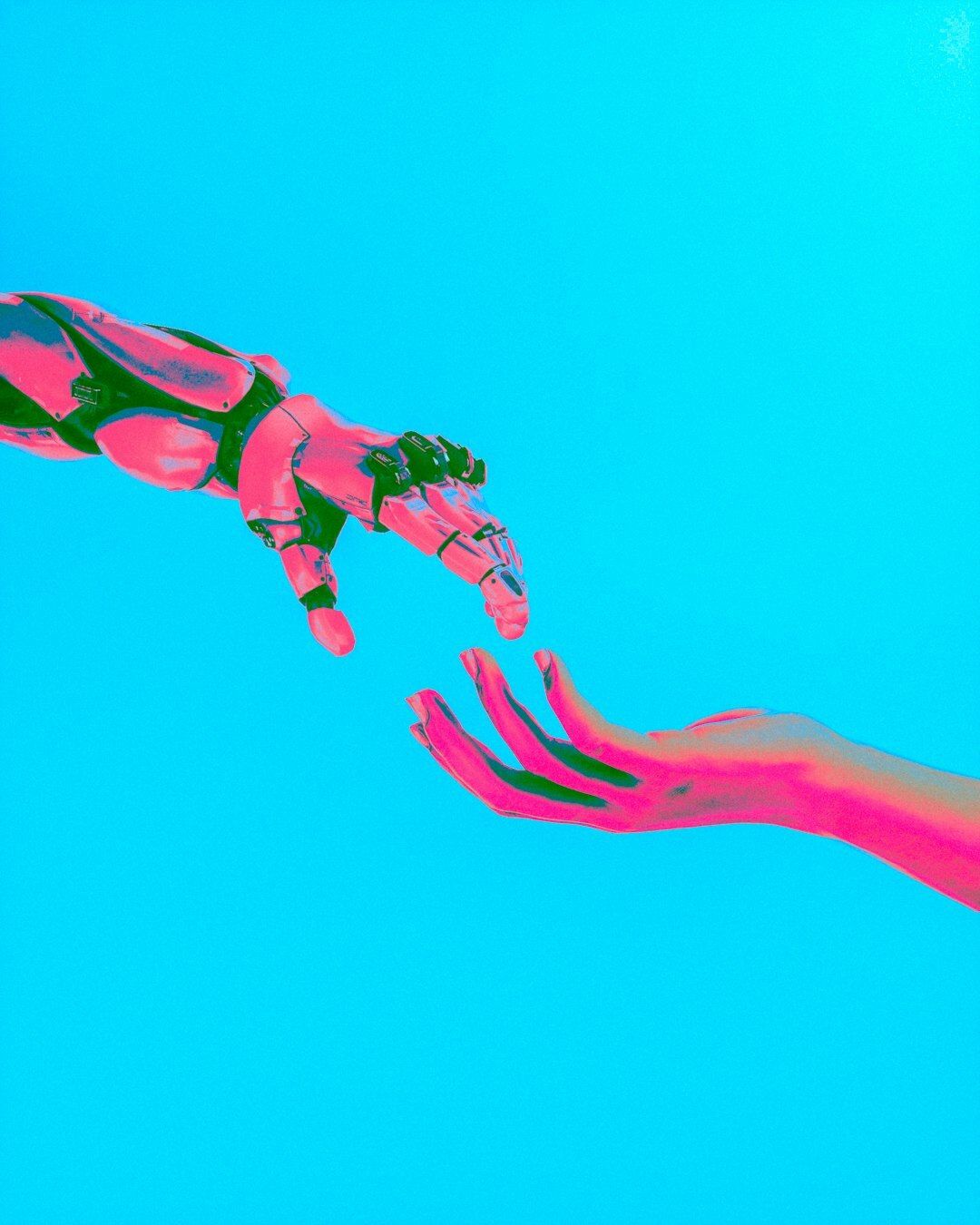- Biodesign Academy
- Posts
- AI Is Changing How We Make Bio-Materials
AI Is Changing How We Make Bio-Materials
And Why Biodesigners Should Care

Dear reader,
You know how everyone's talking about sustainable materials lately? Well, the scientists making mycelium leather, bacterial cellulose packaging, algae plastics, and natural bacterial dyes just got some serious AI superpowers.
A couple of new AI tools are making bio-material development way faster and more reliable. And this creates some pretty interesting opportunities for biodesigners who want to work in this space.
Here's what's happening:
AI can now read research papers and do analysis on its own
AI can suggest real-time improvements while materials are literally growing
AI can predict if bio-materials will survive manufacturing heat before anyone builds them
Why should you care? Because bio-materials are moving from a "cool graduation project" to "actual alternative to petroleum-based stuff", and they desperately need better tools and interfaces.

GPT Agents: Finally, AI That Actually Does Research
Companies like Bolt Threads and Ecovative are constantly trying to figure out which fungal strains will grow the strongest, most consistent mycelium leather. But there are literally thousands of research papers published every year on fungal biology. Nobody has time to read them all, let alone connect the dots between different studies.
Enter OpenAI's ChatGPT Agents. Rather than facilitating regular ChatGPT conversations, these are AI systems that can actually chain together complex research tasks. They'll search databases, analyze patterns across hundreds of studies, write code to crunch data, and produce reports that would take a human researcher weeks to complete.
What this actually looks like in practice:
For mycelium projects: Agents can systematically go through growth studies, find the best substrate combinations, and spot processing techniques that actually work at scale
For bacterial cellulose producers: They'll analyze thousands of fermentation studies to identify the most reliable cultivation methods
For algae plastic developers: They'll cross-reference metabolic research with materials science to find algae strains that produce the right kind of lipids
For natural dye projects: They'll scan bacterial genomics papers and identify which flavobacteria strains produce the most stable, vibrant colours
Basically, they're like having a really smart research assistant who never sleeps and can read impossibly fast.
The catch: These agents are brilliant but sometimes overconfident. They might combine data from studies that shouldn't be mixed or present correlations as if they're proven facts. So while they're incredibly useful, you still need humans checking their work.
→ Curious if your lab, institution, or company could use GPT Agents for biodesign research? Grab our Agent Readiness Assessment, it'll help you figure out if your data setup and processes are ready for autonomous research workflows.

GPT-5 Edge: Real-Time AI That Lives in Your Lab / Studio
The daily frustration: Many biodesign labs and companies are growing bacterial cellulose for packaging and textiles, but their cultures can be moody. One batch produces thick, strong film. The next batch? Thin and weak. Traditional testing means waiting weeks to figure out what went wrong.
But GPT-5's upcoming edge models (the Mini and Nano versions) could change everything. Instead of sending data to the cloud, these AI models would run right in your production facility, watching your materials grow and suggesting tweaks in real-time.
Growing mycelium leather: Your sensors are constantly measuring how dense the mycelium is getting, how fast it's consuming nutrients, what the moisture levels look like. The AI watches all this happening and says things like: "Hey, increase the nitrogen in substrate zone 3 by 0.3%, drop the humidity to 85%, and bump the temperature up 1.2 degrees in areas 3 through 7." Instead of waiting two weeks to see if your batch worked, you're optimizing while it's actually growing.
Making bacterial cellulose films: Your fermentation tanks are tracking bacterial growth, pH changes, how thick the cellulose is getting. The AI processes all this data and suggests: "Add some yeast extract at the 72-hour mark, adjust pH to 6.2, speed up the stirring." Companies like Modern Synthesis could finally get consistent material properties instead of playing the batch lottery.
Cultivating algae for plastics: Your photobioreactors are monitoring cell growth, lipid buildup, CO2 usage. The AI optimizes feeding schedules and light cycles to maximize the stuff you need for biodegradable plastic production.
Producing bacterial dyes: The system tracks bacterial growth phases and pigment production, then tweaks temperature and nutrients to get the most vibrant, stable colors possible.
Example of what AI might suggest: "Increase glucose concentration by 15% and lower temperature by 2°C. This should make your bacterial cellulose 25% stronger without affecting transparency."
Want to try this approach now? Here's a prompt template you can test with current AI:
You are a bio-material optimization assistant working with living organisms.
Context:
- Material: Bacterial cellulose film
- Strain: Komagataeibacter xylinus
- Current conditions: 28°C, pH 6.5, 2% glucose
- Observed thickness: 0.8mm after 7 days
- Target: 1.2mm thickness, maintain transparency
- Constraints: Food-safe ingredients only, max 30°C temperature
Task:
1. Suggest 2 modifications with scientific rationale
2. Predict effects on thickness, strength, and transparency
3. Output in structured format
Example:
{
"modification": "Add 0.1% yeast extract",
"rationale": "Provides nitrogen source for enhanced bacterial growth",
"expected_effects": {
"thickness_change": "+35%",
"strength": "improved",
"transparency": "unchanged"
}
}
This kind of instant feedback could turn months of material optimization into weeks.
→ Want to try this yourself with more templates? Get the basic prompt template - just a simple starter you can test with current AI tools to see how this might work.

So What Does This Mean for You as a Biodesigner?
Honestly, there's a lot of opportunity here. The bio-materials industry is growing fast, but most of their tools look like they were designed by scientists in the 1990s (because they probably were).
Interface design opportunities:
Mycelium companies need dashboards that make sense of growth optimization data
Bacterial cellulose producers need real-time monitoring interfaces that don't require a PhD to understand
Algae projects need ways to visualize complex protein stability predictions
Data visualization challenges: Living materials create incredibly complex, time-based data. Scientists need to see how tiny changes affect material properties, but current tools make this nearly impossible to understand. Plus, companies need to explain bio-material performance to traditional manufacturers who are used to petroleum-based materials.
Workflow design: Bio-material production is this weird mix of biology, chemistry, and manufacturing. Most labs are using systems that don't talk to each other, and quality control processes that don't account for the natural variability of living systems.
Communication design: Fashion brands using mycelium leather need to understand the science behind their materials. Packaging companies switching to bacterial cellulose need clear comparisons to traditional films. Investors funding algae startups need simple explanations of why these technologies matter.
Where the real opportunities are:
Bio-foundries (automated bio-material production facilities) desperately need better control interfaces
Material libraries for bio-based alternatives need search and comparison tools that actually work
Supply chain platforms connecting bio-material producers with manufacturers need features that account for biological variability and scaling challenges
This industry is growing fast, but most tools are built by scientists for scientists. If you can bridge that gap through GPT agents and GPT-5, there's real opportunity.
Getting Started
If this stuff sounds interesting to you:
Learn the basics - Understanding how mycelium, bacteria, and algae actually work will make you way more valuable to bio-material experts. Follow biodesign labs, studios, and companies on social media to see what they're working on.
Study existing tools - Look at fermentation monitoring software and material testing interfaces. Most look terrible and are impossible to use. There's your opportunity.
Network strategically - Bio-material conferences like Biomimicry Global have tons of startups that need design help. IndieBio and other accelerators regularly fund bio-material companies that are desperate for better interfaces.
Consider partnerships - Many of these companies are small startups with brilliant scientists and terrible user experiences. Research institutions have fascinating projects but interfaces that make you want to cry.
The bio-materials world is exploding right now, but it's still mostly scientists building tools for other scientists. If you can bridge that gap, there's real opportunity.
Talk soon,
Raphael,
Biodesign Academy
